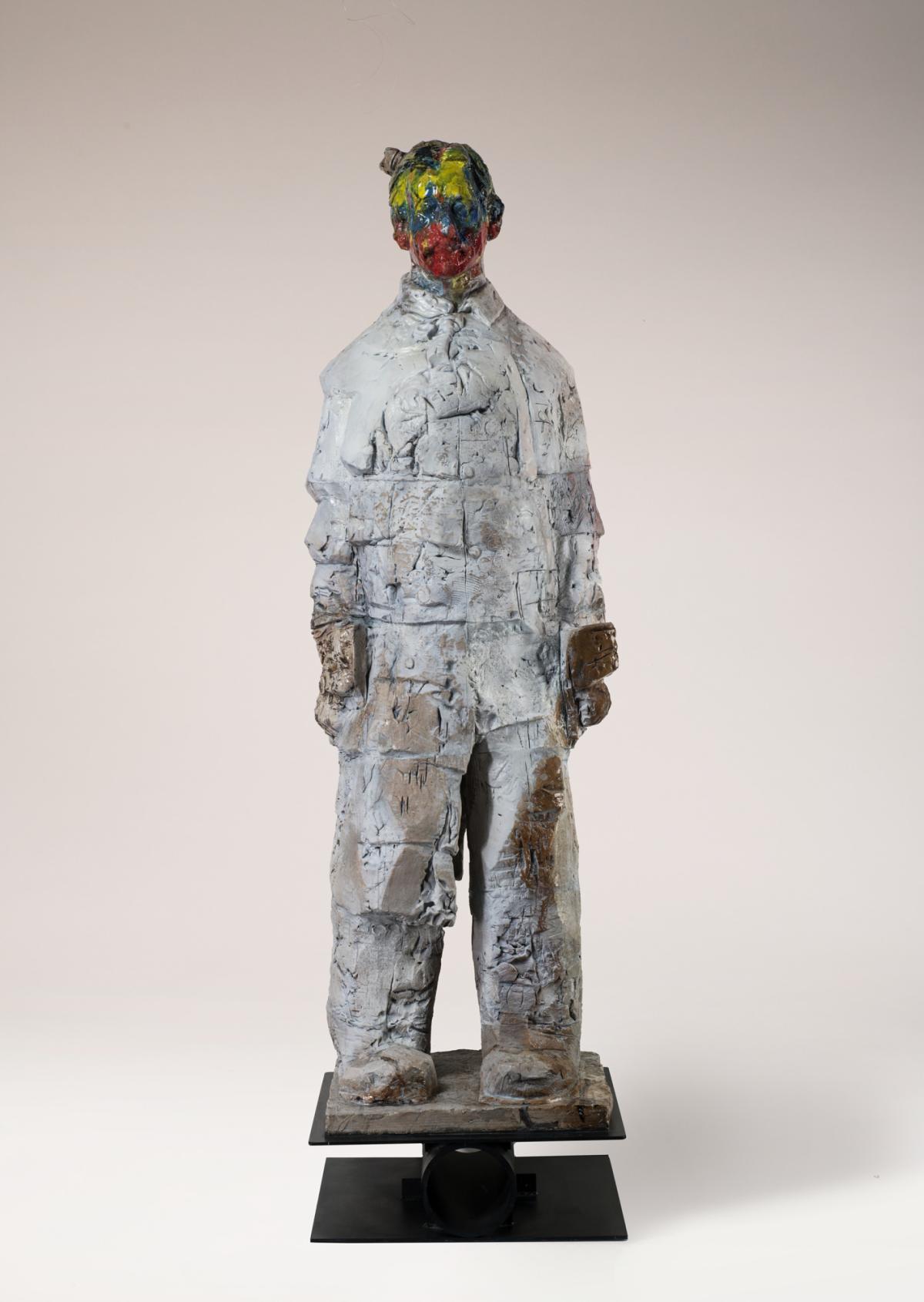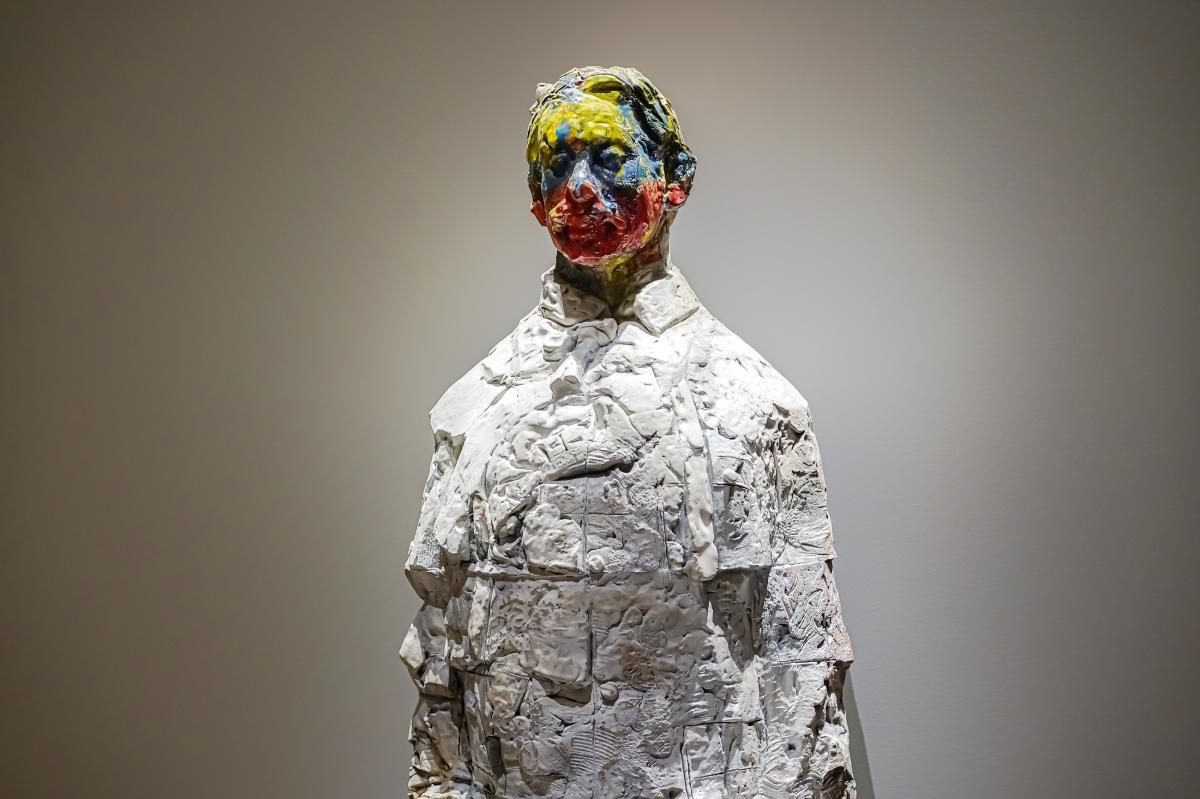Chinese-born, San Francisco-based sculptor Wanxin Zhang uses clay to make artworks that blend historical references and contemporary cultural commentary. Born in 1961 in Changchun, China, Zhang grew up during the Chinese Cultural Revolution, a violent period of the country’s history led by Communist Party leader Mao Zedong. After the Cultural Revolution ended in 1976, Zhang became part of the first generation to receive a formal art education.
It was during his time at Lu Xun Academy of Art that he visited Xi'an and studied the Chinese terracotta warriors, which had been recently excavated. Zhang has stated, "To create a new genre using the same materials and creation process as the conscripts who created the original Qin Terracotta Army has always been my artistic dream.”
Zhang’s Warrior with Color Face became part of SAAM’s collection in 2021 as a gift in honor of the 50th anniversary of the Renwick Gallery. His series of Color Faces are an homage to Chinese culture as well as a commentary on his experiences living in the United States. They recall colored masks worn during opera performances to represent a range of characters, personality traits, and backgrounds. As Zhang explains, “Different colors can distinguish goodness from evil, strength from serenity. And these operas are just like life—they show us history, politics, and the human condition.”
“Color Face” is also an intentional play on words that describes Zhang’s continuing experience of otherness within the country that has been his home for over thirty years. “These pieces seek to ask and discuss the same questions that will never really be answered. They are individual, they are puzzled, but they have hope, and they wear their own colors on their faces to pose the range of their humanness.”
Zhang’s sculpture is on view in This Present Moment: Crafting a Better World, the special exhibition that celebrates the dynamic landscape of American craft. The exhibition explores how artists—including Black, Latinx, Asian American, LGBTQ+, Indigenous and women artists—have crafted spaces for daydreaming, stories of persistence, models of resilience, and methods of activism that resonate today. In order to craft a better world, it must first be imagined. This story is part of a series that takes a closer look at selected artists and artworks with material drawn from exhibition texts, the catalogue, and artists' reflections.






















